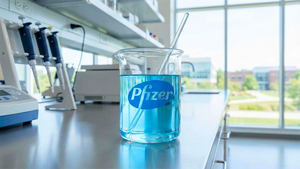J.D. Power & LMC Automotive October 2022 Forecast: Automotive Supply Increases Help October Sales Pace Improvement; Highest October on Record for Spending on New Vehicles
J.D. Power:
The Retail Sales Forecast
New-vehicle retail sales for October 2022 are expected to increase when compared with October 2021, according to a joint forecast from J.D. Power and LMC Automotive. Retail sales of new vehicles this month are expected to reach 1,008,200 units, a 12.1% increase compared with October 2021. October 2022 has one fewer selling day compared with October 2021. Comparing the same sales volume without adjusting for the number of selling days translates to an increase of 8.0% from 2021.
The Total Sales Forecast
Total new-vehicle sales for October 2022, including retail and non-retail transactions, are projected to reach 1,157,900 units, a 15.2% increase from October 2021. Comparing the sales volume without adjusting for the number of selling days translates to an increase of 10.9% from 2021.
The Takeaways
Thomas King, president of the data and analytics division at J.D. Power:
“October results show that new-vehicle inventory levels are experiencing modest improvement with month-end retail units expected to exceed one million units for the first time since May 2021. The result is a retail sales pace that shows a meaningful increase from a year ago but still falls below its potential due to historically lean vehicle availability.
“As expected, with an increase in supply, several financial indicators are seeing a ‘cooling off’ from the heated growth rates earlier this year—but the industry’s financial health is still positive. Dealer profit per unit continues to modestly soften from its peak—down just more than $500 from a few months ago but still over double of what they were pre-pandemic. Also due to the rise in sales volumes accompanied by near record level transaction prices, retailers in aggregate, will experience the second most profitable October on record. Although rising interest rates continue to put pressure on affordability, buyers spent more money on new vehicles this month than any previous October. Overall, we expect to see some deterioration in per unit pricing and profitability in the coming months, however, nearly 50% of new vehicles are still being sold above MSRP, the industry is recalibrating to a more durable pricing environment.”
Dealerships are continuing to pre-sell vehicles in their delivery pipeline. This month, 52% of vehicles will be sold within 10 days of arriving at a dealership, while the average number of days a new vehicle is in a dealer’s possession before being sold is on pace to be 19 days—down from 20 days a year ago.
For October, new-vehicle prices remain at record levels, with the average transaction price expected to reach $45,599—a record for October and a 2.7% increase from a year ago. The increase in sales volume and near record level transaction prices are resulting in buyers being on track to spend nearly $46.0 billion on new vehicles this month—the highest level ever for the month of October and a 10.9% increase from October 2021.
“Even with a modest increase in inventory, strong demand continues to allow manufacturers to maintain a low level of discounting. The average incentive spend per vehicle is tracking toward $882, a decrease of 44.7% from a year ago. This will mark the sixth consecutive month under $1,000. Incentive spending per vehicle expressed as a percentage of the average vehicle MSRP is trending at 1.9%, down 1.6 percentage points from October 2021. One of the factors contributing to the reduction in incentive sending is the absence of discounts on vehicles that are leased. This month, leasing will account for just 16% of retail sales. In October 2019, leases accounted for 30% of all new-vehicle retail sales.
“Elevated pricing coupled with interest rate hikes are inflating monthly loan payments. After breaking the $700 level for the first time ever in July, the average monthly finance payment in October is on pace to be $711, up $47 from October 2021. That translates to an 7.0% increase in monthly payments from a year ago. The average interest rate for new-vehicle loans is expected to increase 199 basis points from a year ago to 6.03%.
“The increase in monthly loan payments would be even greater were it not for the continued strength of used-vehicle prices, which increases the amount of trade-in equity that new-vehicle buyers are bringing to their next purchase. The average trade-in equity for October is trending toward $9,297, a 7.0% ($598) increase from a year ago but down $820 since the peak in June 2022. For context, October 2022 trade equity is still more than double the pre-pandemic level.
Total retailer profit per unit—inclusive of grosses and finance and insurance income—is on pace to be $4,522, down 10.4% from a year ago. Total aggregate retailer profits from new-vehicle sales for the month of October is projected to be down 3.3% from October 2021, reaching $4.6 billion, the second-best October on record.
“November is the traditional start of the holiday sales event season for the industry. This typically involves a bias towards premium vehicles along with pricing discounts in the form of manufacturer supported lease offers. While production has shown some signs of improvement, it most likely will not be enough to bring forward any material sales events. Higher interest rates will continue to compress transaction prices and retailer profit, though overall industry health is still at historically high levels.”
Sales & SAAR Comparison
U.S. New Vehicle |
October 20221, 2 |
September 2022 |
October 2021 |
Retail Sales |
1,008,156 units
|
962,937 units |
933,816 units |
Total Sales |
1,157,894 units
|
1,106,721 units |
1,043,653 units |
Retail SAAR |
13.0 million units |
11.9 million units |
11.7 million units |
Total SAAR |
15.0 million units |
13.4 million units |
13.2 million units |
| 1 | Figures cited for October 2022 are forecasted based on the first 19 selling days of the month. |
| 2 | October 2022 has 26 selling days, one fewer than October 2021. |
The Details
- The average new-vehicle retail transaction price in October is expected to reach $45,599, a 2.7% increase from October 2021. The previous high for any month—$46,173—was set in July 2022.
- Average incentive spending per unit in October is expected to reach $882, down from $1,595 in October 2021. Spending as a percentage of the average MSRP is expected to fall to 1.9%, down 1.6 percentage points from October 2021.
- Average incentive spending per unit on trucks/SUVs in October is expected to be $886, down $703 from a year ago, while the average spending on cars is expected to be $836, down $786 from a year ago.
- Buyers are on pace to spend $46.0 billion on new vehicles, up $4.5 billion from October 2021.
- Truck/SUVs are on pace to account for 78.8% of new-vehicle retail sales in October.
- Fleet sales are expected to total 149,700 units in October, up 41.6% from October 2021 on a selling day adjusted basis. Fleet volume is expected to account for 13% of total light-vehicle sales, up from 11% a year ago.
- Average interest rates for new vehicle loans are expected to increase to 6.03%, 199 basis points higher than a year ago.
EV Outlook
Elizabeth Krear, vice president, electric vehicle practice at J.D. Power:
“October breaks a three-consecutive-month decline in EV consideration. With a 1.2% increase in new-vehicle shoppers saying they are ‘very likely’ to consider purchasing an EV in the next 12 months, the total stands at 27.4%. EV consideration data from J.D. Power has shown a correlation between ‘very likely’ consideration and rising gas prices. Additional factors that are contributing to the increase in consideration are federal EV support programs and more mass-market EV models coming to market. The number of EV models included in our data set is 51, nearly double the 27 models two years ago.
“With the introduction of the Silverado EV and the Equinox EV to the October EV Consideration Monthly Pulse, Chevrolet is now the most considered EV brand in the country, surpassing Tesla by one percentage point. Notable, too, is that five of the six most considered models are mass market; the Tesla Model S is the only premium model in the group.
“EV interest is increasing and EV availability is growing. However, adoption has been flat for the past six months with the retail monthly share for BEVs hovering at 5.6%. The top two reasons for EV rejection are lack of public charging and price. Affordability has decreased 15 points in the past 12 months, primarily driven by aggressive Tesla price increases going up faster than ICE vehicle segments. Higher interest rates have not helped. Public charging is an issue because, although Infrastructure has increased slightly the past year, the lack of charger reliability blunts the progress of charger installations.”
Global Sales Outlook
Jeff Schuster, president, Americas operations and global vehicle forecasts, LMC Automotive:
“September fared a little better than expected with the selling rate for global light vehicles coming in at 85.9 million units, down from the rate of 91.0 million-units in August. September volume was up 17% year over year. Based on percentage, India led the way with year-over-year growth of 81%. Asia-Pacific was up 30% with double digit growth in all major markets, including China being up 28%. North America (9%) and Western Europe (6%) were up but lagged the rest of the world.
“In October, the global light-vehicle selling rate is projected to be 86.7 million units, with volume up nearly 12% as a strong recovery in Asia meets better prospects in the United States and Western Europe. Like September, October is benefiting from a low base a year ago that is keeping most markets in positive growth territory.
“The outlook for demand is virtually unchanged from a month ago at 82 million units, just 0.2% higher than a year ago. Supply chain issues are expected to ease throughout 2023 but a full recovery is still not on the near-term horizon. The industry has cumulatively lost more than 30 million units since the start of the pandemic, some of which will not be recovered. Next year, we expect demand to increase 4% to 84.8 million units, but another year at 81 million units is certainly plausible given the high level of uncertainty that remains.”
About J.D. Power and Advertising/Promotional Rules www.jdpower.com/business/about-us/press-release-info
About LMC Automotive www.lmc-auto.com
View source version on businesswire.com: https://www.businesswire.com/news/home/20221026005280/en/
Contacts
Media Relations Contacts
Geno Effler, J.D. Power; West Coast; 714-621-6224; media.relations@jdpa.com
Emmie Littlejohn, LMC Automotive; Troy, Mich.; 248-817-2100; elittlejohn@lmc-auto.com
More News
View More




Recent Quotes
View More
Quotes delayed at least 20 minutes.
By accessing this page, you agree to the Privacy Policy and Terms Of Service.